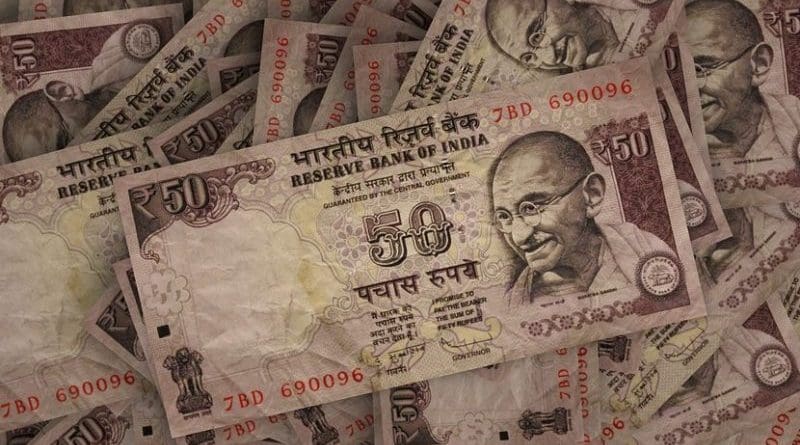Modinomics Versus Budget 2023-24: Reticent To Growth, Harping On Agriculture And Middle Class With Eye On Elections – Analysis
India’s fiscal budget is not merely a statement of account, but also a short term economic policy. The media hailed, and domestic investors were exhilarated with the greater tax exemptions for middle income groups and a bagful of fiscal gifts to the agriculture sector. Both are major contributors to the vote bank. The next general election is in 2024.
But, where is the budget’s push to the manufacturing sector and mployment generation which were the prime mandate by the Modi government? Both are reeling under constant depression since the eruption of Covid 19. It’s ironic to say, on the contrary, that agriculture has sustained a constant growth even during pandemic and dispersed better income to the sector. Income tax relief will have marginal impact on the growth, given the fact that only 8 percent of the population pays taxes.
The major sore of the economy is poor growth in manufacturing and unemployment. Manufacturing growth lopsided and unemployment has peaked at high levels. Manufacturing is expected to slip to 1.6 percent in 2022-23 from 9.9 percent in 2021-22. Unemployment continued as high as 8 percent in December 2022, according to CMIE survey.
India’s growth is structurally peculiar to China and Japan. While China and Japan relied more on manufacturing and export, India depends largely on service sector for growth. Notwithstanding manufacturing sullied at the bottom of the growth, GDP perked up in India. In 2022-23, GDP is expected to achieve a growth of 7 percent, against 8.7 percent in 2021-22, despite a major slash in the manufacturing growth.
Manufacturing accounts for merely 17 of GDP. Even though the present government targeted an upswing in the share of manufacturing in GDP — from 16-17 percent to 22 percent in 2022 (according to the election manifesto in 2014), by launching Make in India, little has been achieved so far.
Over the decade, marginal growth in manufacturing was visible, despite focuses made on Make in India, embracing Ease of Doing Business, state level land reforms and advancement of digitization. Unemployment continues to be the core pinch to the economy. In other words, even though GDP bounced back in the post COVID 19, employment opportunities were dormant.
In 2020, to rejuvenate manufacturing, budget provided larger incentives, particularly to the MSME. It provided larger credit facilities without collateral obligations and revamped PLI scheme (Production Linked Incentive), enlarging industry areas covered under the scheme from 3 to 13. It provides direct incentives on incremental sales. The main aim of this scheme is to perk up inclusive growth and foster India as the global supply chain hub, after China losing the grip due to its zero COVID policy. To enhance India’s prominence in global supply chain, India announced National Logistic Policy for the first time in September 2022.
But, few were takers of these policy initiatives to rejuvenate the manufacturing sector. Disbursal of credit is a case in point. Notwithstanding MSME is the engine for supply chain growth, disbursal of credit was lowest to this sector. Share of MSME in the deployment of bank loans (outstanding) continued to be at the bottom among three sectors, viz, Large, Micro and Small and MSME. In December 2022, it was 7.2 percent for MSME, as compared to 17.6 percent and 75.2 percent for Micro and Small and large scale sector.
Little attention was given to PLI scheme and logistic issue in the budget to give a new lease of life. The battered Chinese economy unfolded an opportunity, paving the way for India to emerge as an alternative to China’s supply chain industry. The recent decision of Apple of USA to decouple from China and shift to India, and Foxconn’s decision to set up a world class semiconductor plant in India, reinforced foreign investor’s confidence in India as an emerging supply chain hub. But, the budgetary silence on manufacturing might have swamped their enthusiasm.
India emerged the second biggest manufacturer of mobile phone and largest manufacturer of smart phones in the world. Incidentally, India’s dependence on China begins to be receding. During the first nine months of 2022-23 (April-November), India’s dependence on China for electronic components dived to 34 percent, as compared to 49 percent in 2021-022 ( April-March). Following suit, dependence on auto components from China dropped to 24 percent during nine months of 2022-23, as compared to 26 percent in 2021-22 ( April- March). Recently, Standford economist and Nobel laureate Michael Spence declared “India is the outstanding performer now, noting that the country remained the most preferred destination for investment”.
Given the India’s logistic sector in deplorable situation, which is an important attributes to uplift the supply chain industry, this industry has been receiving a step motherly treatment till a National Policy on Logistic was announced in September 2022. Logistic costs in India is one of the highest in the world. According to Mr Nitin Gadkari, Minister for Urban Development, logistic costs in India is as high as 16 percent of GDP, compared to 10 percent in China and 8 percent in USA and Europe.
Much is needed to improve the logistic sector if India is to progress on the stage as an alternative to China’s supply chain. The major issues which are dragging India’s logistic sector are fragmented markets, lack of standard trucking system, old vehicles, and obsolete warehousing facilities. Above all, over 99 percent of the logistic sector is in the unorganized sector
In summing up, the budget misses to rejig manufacturing sector, which could have increased employment and demand in the country. Income tax relief, though hailed largely, will have a marginal impact on the growth, since few are tax payers.

